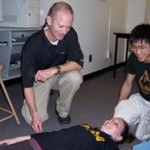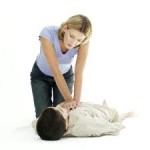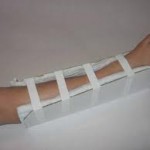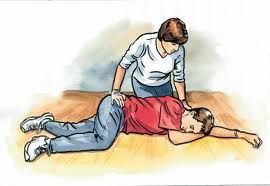Whether you are inside or outside of your home, you can never tell when a real emergency could occur. It would really be a very big deal if you are knowledgeable of the proper considerations that you have to take during such situations. With this, you should be well-versed with first aid procedures.
1st aid training involves the familiarity with the basic methods that you have to perform during emergency situations. It only takes a few sessions of training to be capable of handling yourself and the patient very well. It takes courage, presence of mind, and alertness to be able to administer the proper procedures at the right time. There are various health institutions that offer 1st aid training to various people who would want to know what to do during emergencies. Here are some of the basic concepts that you could learn about when you decide to undergo 1st aid training:
1)Â Â Â Â Â Complete body assessment
 During 1st aid training, one of the first things that you are going to learn about is how to assess the overall condition of the patient. With proper training, you will be able to learn how to examine the airway for any obstruction, if there are signs of shock, and if there are any signs of external and internal bleeding. This is very vital in 1st aid training because with proper assessment, you will be able to know what to do while waiting for help and what to tell the paramedics when they arrive.
During 1st aid training, one of the first things that you are going to learn about is how to assess the overall condition of the patient. With proper training, you will be able to learn how to examine the airway for any obstruction, if there are signs of shock, and if there are any signs of external and internal bleeding. This is very vital in 1st aid training because with proper assessment, you will be able to know what to do while waiting for help and what to tell the paramedics when they arrive.
2)Â Â Â Â Â Cardio-pulmonary resuscitation (CPR)
 CPR is a very critical procedure to learn about during 1st aid training. This is done after you have properly assessed the patient. There are proper positions that you have to take note off. The ideal number of chest compressions and emergency breaths should also be considered. CPR is very important because when a person loses consciousness, CPR helps you make sure that the patient’s brain is well-oxygenized until help arrives. When the brain loses valuable oxygen, then there may be a possibility for the patient to suffer brain damage.
CPR is a very critical procedure to learn about during 1st aid training. This is done after you have properly assessed the patient. There are proper positions that you have to take note off. The ideal number of chest compressions and emergency breaths should also be considered. CPR is very important because when a person loses consciousness, CPR helps you make sure that the patient’s brain is well-oxygenized until help arrives. When the brain loses valuable oxygen, then there may be a possibility for the patient to suffer brain damage.
3)Â Â Â Â Â Nose bleeds
 Patients who have nose bleeds are very common especially in the school setting. This may be brought about by climate, trauma, or an underlying health condition. In 1st aid training, you will learn that you should keep the patient’s head forward to prevent the blood from entering the air passages. You should also pinch the nose at the same time. Keeping the patient calm also helps decrease the blood flow.
Patients who have nose bleeds are very common especially in the school setting. This may be brought about by climate, trauma, or an underlying health condition. In 1st aid training, you will learn that you should keep the patient’s head forward to prevent the blood from entering the air passages. You should also pinch the nose at the same time. Keeping the patient calm also helps decrease the blood flow.
4)Â Â Â Â Â Wound care
 When you undergo 1st aid training, one of the valuable things that you have to take note of is what to do if a companion suddenly acquires a wound. This could easily happen inside or outside your home. This is basically why there are portable first aid kits that mainly have items that would really help you administer first aid to any wound. If the wound is large, then you would be able to help the victim avoid infection while waiting for proper medical attention. Wound care involves proper washing and dressing of the wound. Sterile bandages should always be on hand when you administer wound care.
When you undergo 1st aid training, one of the valuable things that you have to take note of is what to do if a companion suddenly acquires a wound. This could easily happen inside or outside your home. This is basically why there are portable first aid kits that mainly have items that would really help you administer first aid to any wound. If the wound is large, then you would be able to help the victim avoid infection while waiting for proper medical attention. Wound care involves proper washing and dressing of the wound. Sterile bandages should always be on hand when you administer wound care.
5)Â Â Â Â Â Hypothermia treatment
 In very cold areas of the world, there is a large possibility that a person could really die from hypothermia. When you have 1st aid training, you could really prevent this from happening or treat the patient that is actually experiencing a significant drop in body temperature.
In very cold areas of the world, there is a large possibility that a person could really die from hypothermia. When you have 1st aid training, you could really prevent this from happening or treat the patient that is actually experiencing a significant drop in body temperature.
6)Â Â Â Â Â Choking
 When you see a person choking at any given place, in any given time, you should really know what to do. The Heimlich maneuver is one of the basic techniques that is taught in 1st aid training. During the training, you will know how to administer the Heimlich on a pregnant or non-pregnant person, a big or average size person, and on infants or children.
When you see a person choking at any given place, in any given time, you should really know what to do. The Heimlich maneuver is one of the basic techniques that is taught in 1st aid training. During the training, you will know how to administer the Heimlich on a pregnant or non-pregnant person, a big or average size person, and on infants or children.
7)Â Â Â Â Â Burn treatment
 Burns are very common. But you really have to know what to do to treat or give emergency care when this happens. In 1st aid training, there are means to administer primary aid for such a situation. If the burns are too great for you to deal with, then you should at least know what to do until the burn victim makes it to the hospital.
Burns are very common. But you really have to know what to do to treat or give emergency care when this happens. In 1st aid training, there are means to administer primary aid for such a situation. If the burns are too great for you to deal with, then you should at least know what to do until the burn victim makes it to the hospital.
8)Â Â Â Â Â Splinting
 When there are fractures, you should know how to splint the area of injury. 1st aid training teaches you how to make splints for extremities that are commonly fractured. Splinting is very important to stabilize the patient until proper medical attention is provided.
When there are fractures, you should know how to splint the area of injury. 1st aid training teaches you how to make splints for extremities that are commonly fractured. Splinting is very important to stabilize the patient until proper medical attention is provided.
Make sure that you prepare yourself well before1st aid training. This way, you may be able to ready yourself in any situation that you may be subjected to. This will make you a very effective first aid provider.
